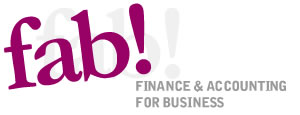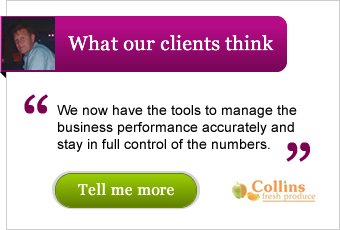Is Cash still King?12 Dec

Cash is currently a rare and expensive commodity and cash management should take priority on any business owner’s agenda. With banks seeking to reduce their exposure to market risk, and overdrafts being at a premium, businesses need to look internally for their short term finance.
A business may have a high stock value or large amounts of debtors on its balance sheet but, if unable to convert into cash, it may be unable to pay for its wages and other purchases in the short term. Unless it’s able to convert its current assets to cash quickly, the company could technically be bankrupt, despite making profits and having a positive net worth.
Although cash management is about having the right tools to forecast cash, more importantly it requires the underlying processes such as debtors, creditors and stock to be in place to optimize a company’s working capital.
TEN WAYS TO IMPROVE CASH FLOW
COLLECTION
1) Credit check new customers in advance. You can purchase status reports from a number of credit agencies. These will include full customer details and financial results, along with payment experience of other suppliers. Alternatively, ask for a bank reference and a couple of similarly- sized supplier references. If no credit history is available, ask for cash with order initially, then impose a credit limit; review it regularly and stick to it!
2) Ensure your customer understands the terms and conditions of sale – make it clear that you are not just selling something, you are also agreeing with the buyer what, how and when he’s going to pay for it.
3) Monitor customer payment practices. The sooner a late payment is identified, the more likely it can be mitigated. It is important to have a good structure to the debt chasing procedure, i.e, follow-up calls at regular intervals, and statements where necessary. If invoice terms are 30 days, then a phone call should be made on day 31 to ask why payment hasn’t arrived.
4) Invoice accurately – most of the reasons given for non-payment relate to invoice queries. Make sure the correct amount is invoiced, the correct reference numbers are quoted, and that it is sent to the correct address.
5) Some of your customers will have set payment procedures and require invoices to be received within so many days after the end of the month. Ensure your invoices are sent out promptly after issue so that you are incorporated into their monthly cheque or BACS run.
6) Consider outsourcing. There are many local collection agencies, or firms of solicitors who provide this service – this can neatly dovetail into legal proceedings for the ones who go too far!
PAYMENTS
7) The easiest way to improve your cashflow is by not purchasing items until absolutely business critical, and then spread the payment instead of taking a lump sum out of cash flow. More and more goods can now be purchased via hire purchase or leasing, including new and used cars, commercial vehicles, office furniture and computer hardware and software. A simple rule of thumb is that purchase of asset should be financed over the life of the asset; if you are expecting your new computer to last 3 years, spread the payment over 3 years.
8) Supplier payments should be made on the last day they are due, except if it makes sense to take advantage of any early payment discount. Schedule any purchases to maximize credit allowance, i.e. by buying early in the month. Purchasing goods by company credit card can often increase time before payment is taken.
9) Have a watertight purchasing policy. Approval processes for expenditure should be in place and the ‘sign off’ threshold strictly adhered to. Consolidating suppliers, where possible, will allow a business to place larger orders, thereby increasing negotiation power around price and payment terms.
10) Good stock management will be critical in reducing a company’s working capital requirement. A Just In Time (JIT) system will avoid cash being tied up over an extended period of time. Any old, slow-moving or obsolescent stock should be reviewed and sold. (E-bay can be a good outlet), or it may be possible to return goods to the supplier for a refund or credit.
And finally….
If you haven’t already, implement a rolling cash flow forecast. Today. It is not a luxury; it is a necessity. Review it regularly and update as required. Identify and have a contingency plan for any cash gaps. An early warning can give the business time to prepare appropriate actions.







